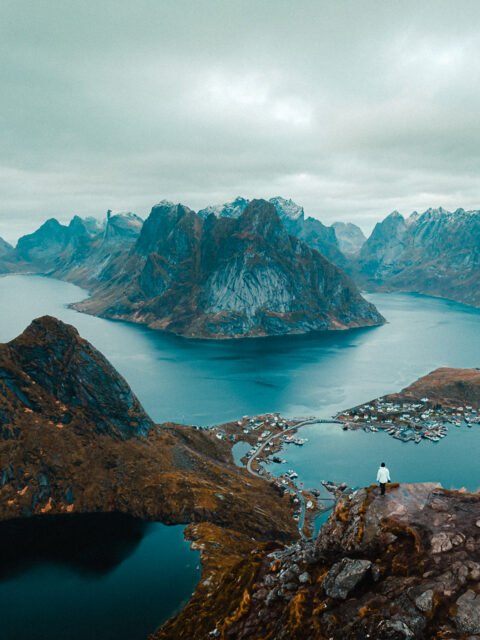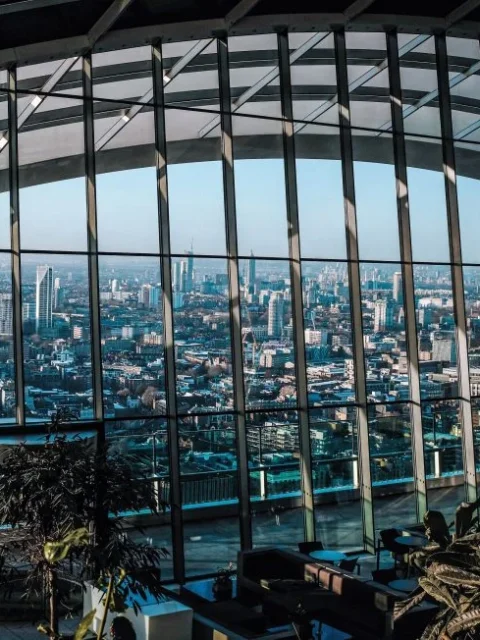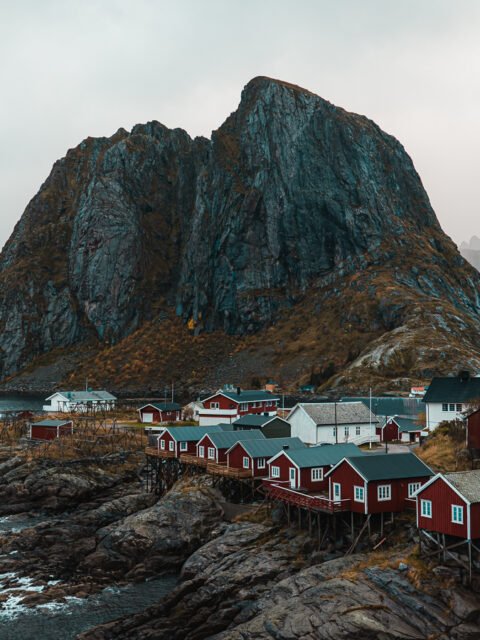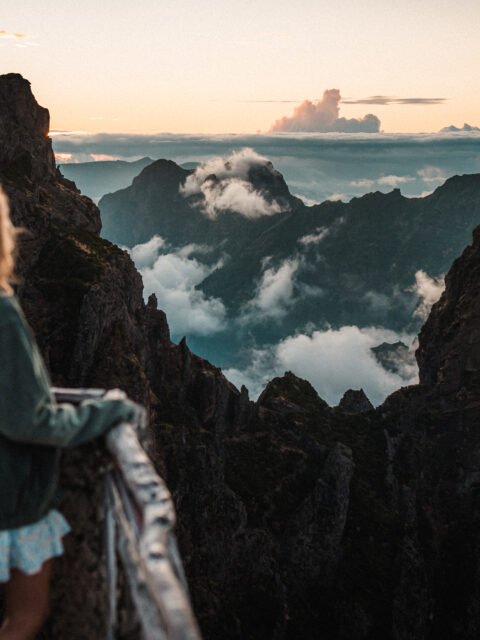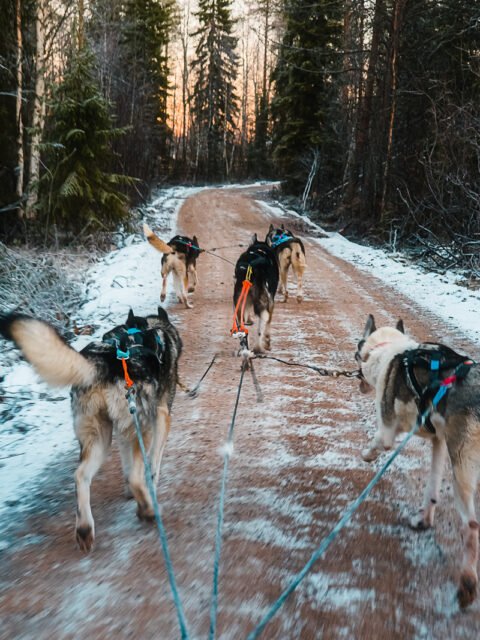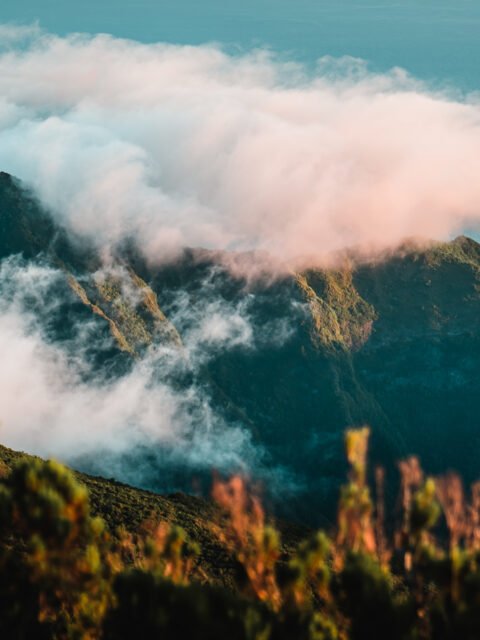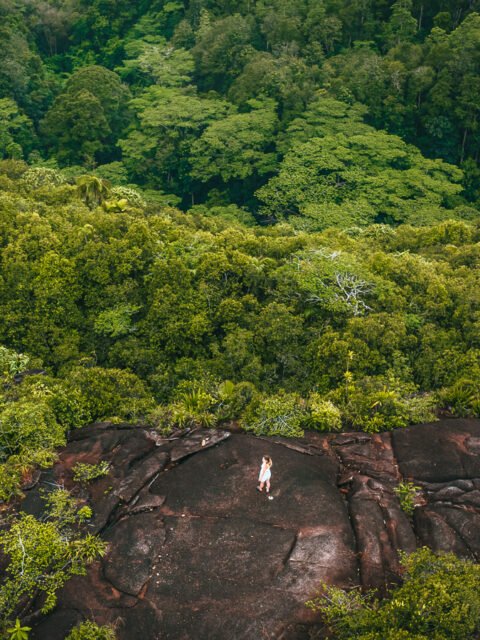In 2022 we spent almost 3 months above the Arctic Circle, and around half of this time was spent in Finnish Lapland during Northern Lights season. One of things we learned during our time hunting for Northern Lights is that not all Northern Lights shows are equal, and most people won’t actually get to see them as clearly or brightly as they would hope or even expect.
But don’t let that put you off, there are plenty of things you can do to increase your chances of a 5 star Northern Lights show that exceeds expectations! So with that in mind, we wanted to share some of our top tips, locations and places to stay to maximise your chances of seeing the famous Aurora Borealis in the best conditions possible.
Why is Lapland one of the Best Places to See the Northern Lights
Tucked away in the northern reaches of Europe, this vast region spans across northern parts of Finland, Sweden, Norway and even a touch of Russia. And located within the Arctic Circle, Lapland is positioned directly beneath the Aurora Oval, a region where the chances of witnessing the Northern Lights are at their highest.
The magnetic field lines that encircle the Earth, funnel charged particles from the sun toward the polar regions, creating an Aurora Belt – and Lapland finds itself right in the heart of it.
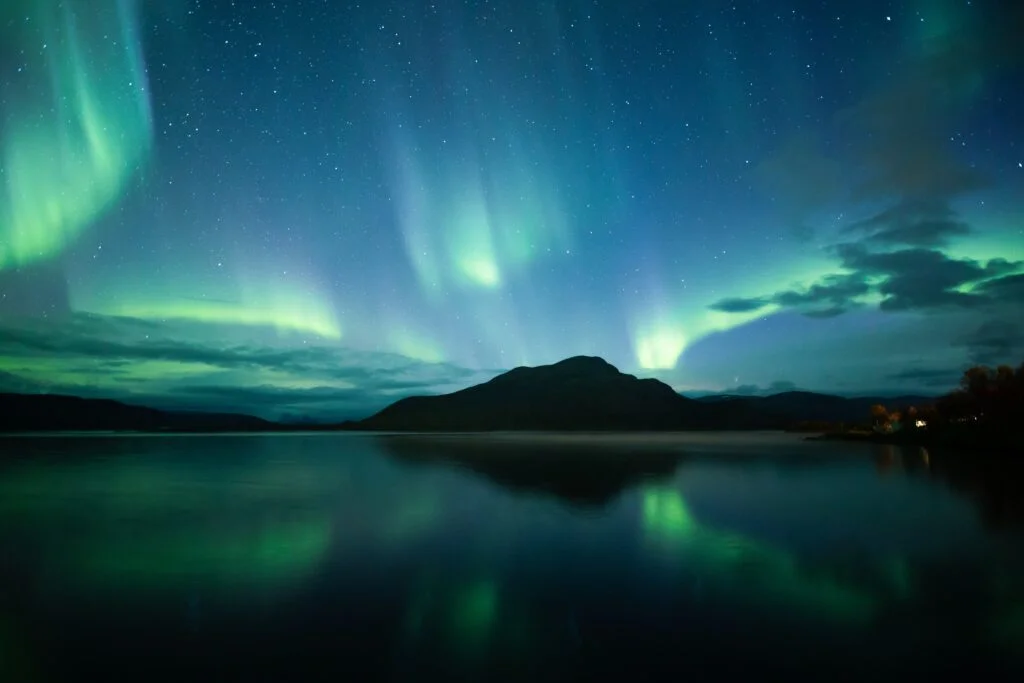
Another reason Lapland steals the spotlight is incredibly clear, dark skies. During the winter months and polar night, the Arctic nights are significantly longer, providing plenty of opportunity for stargazing and Northern Lights sightings.
Plus, the relatively low population and therefore, light pollution in Lapland mean that when the Northern Lights make their appearance, they appear to shine even brighter than in other parts of the world.
Lapland’s pristine winter landscapes further enhances the Northern Lights experience, particularly for Aurora photography. Imagine standing on a snow-covered hill, surrounded by pine trees, frozen lakes and Arctic wilderness, all while the Aurora dances over head.
Apart from the Northern Lights, this region offers an incredible range of winter activities, from husky sledding and reindeer sleigh rides to snowshoeing, skiing and ice fishing. You’ll also have the chance to immerse yourself in the rich cultural tapestry of the indigenous Sami people, who call Lapland home.
When is the Best Time to See Northern Lights in Lapland
When is the best time of year to see the Northern Lights or Aurora Borealis in Lapland? Let’s explore the months that provide the most favourable conditions for Northern Lights viewing in Lapland – the best months for experiencing the Northern Lights in Lapland span from September to March, with each month offering slightly different pros and cons.
September – October
As summer begins to transition into autumn, the Arctic nights grow rapidly longer, setting the stage for the Northern Lights to make their first appearances of the season. Generally, September marks the beginning of the Northern Lights season as the darkness increases the chances of witnessing the Aurora.
In October, the Northern Lights become more frequent and vibrant, the combination of clear nights and relatively milder temperatures makes October an appealing month for Northern Lights hunting.
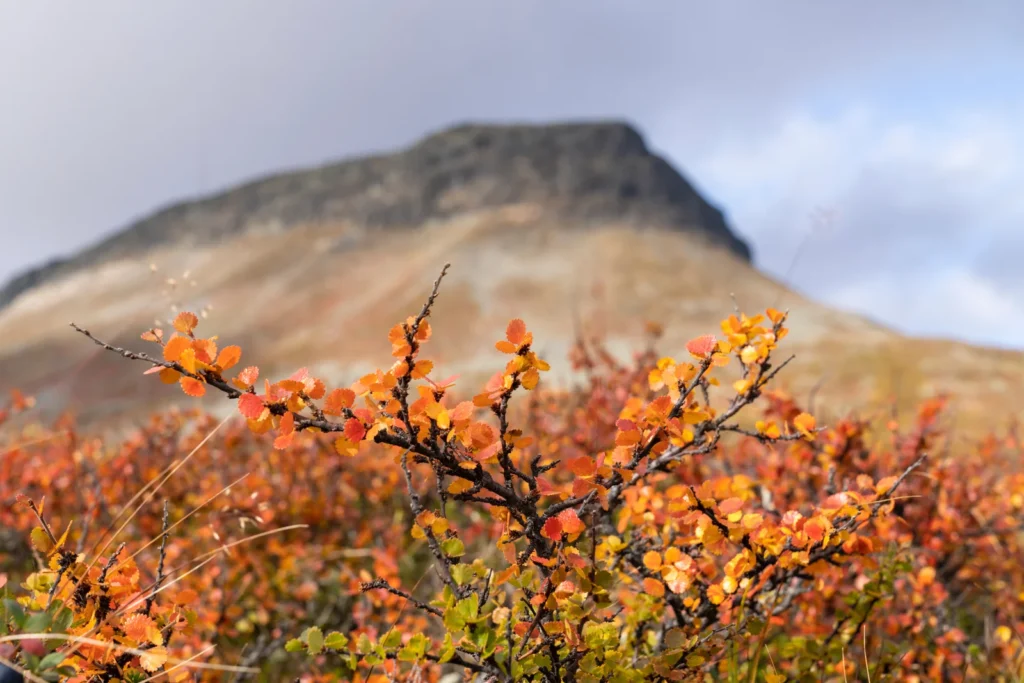
November
November is often the first month of snow in Lapland, with the potential to bring wintery landscapes at much cheaper prices than later on in the season. While you’re not going to guarantee any snow, the further north you are, the better your chances will be.
We were lucky enough to get snow as far south as Rovaniemi on our first trip to Lapland in 2022, combined with northern lights displays around every other night and cheaper rates on hotels & activities – we think November is a great month to consider, especially if you’re on a tighter budget!
December – February
While December and January are the coldest months, the chance of clear skies and stunning Aurora displays is unparalleled. The extended darkness, combined with the deep snow and wintery landscapes creates a breathtaking backdrop to admire or photograph the Northern Lights – arguably the most photogenic time of year.
The only downside is this is the busiest time of year by a long way and the cost of a trip to Lapland in flights and accommodation may be significantly higher.
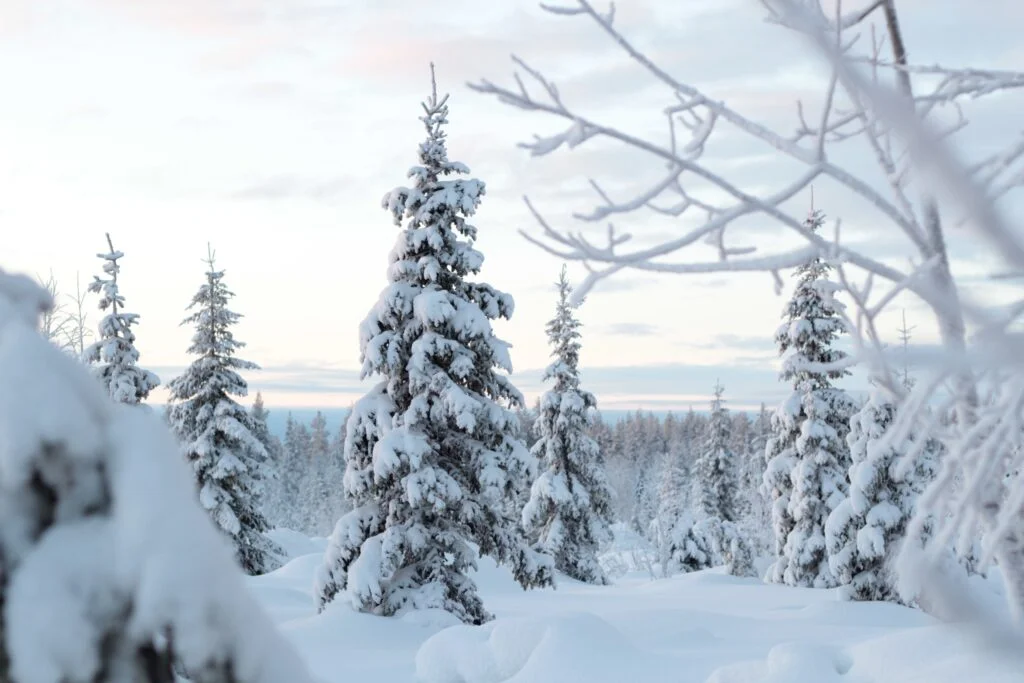
March
As winter begins to loosen its grip and “normal” daylight hours slowly start to return, March provides another great option to consider, offering a chance to witness the Aurora one last time before the midnight sun takes over. Not only do the warmer temperatures give you a more pleasant outdoor viewing experience, but there is still likely to be a decent amount of snow on the ground.
So, if you don’t want to travel during the peak season but you want to experience Lapland and the Northern Lights in deep snow conditions, March could be the perfect choice.
Where are the Best Places to See Northern Lights in Finnish Lapland
Finnish Lapland is probably bigger than you would expect, offering a pretty wide range of options when it comes to locations and accommodation for experiencing the dance of the Northern Lights.
Rovaniemi
As the capital of Lapland, Rovaniemi serves as a perfect starting point for your Northern Lights adventure, in fact it’s most likely where you will fly into. Its accessible location near the border of the Arctic Circle provides ample opportunities for witnessing the lights, whether from within the city itself or by taking a guided tours out into the wilderness.
The main advantage of staying in Rovaniemi is it’s huge range of activities and other things to do to keep you entertained during the day.
Northern Towns
For a more remote experience and a better chance to see the best of the Northern Lights consider staying in one of the smaller towns north of Rovaniemi, such as Inari, Levi or Saariselkä.
We stayed at the Northern Lights Village in Levi, situated a couple of hours from the city and just outside of the ski town of Levi, making it the perfect location to watch the Northern Lights from our bed through their beautiful glass roofed cabins, with minimal light pollution.
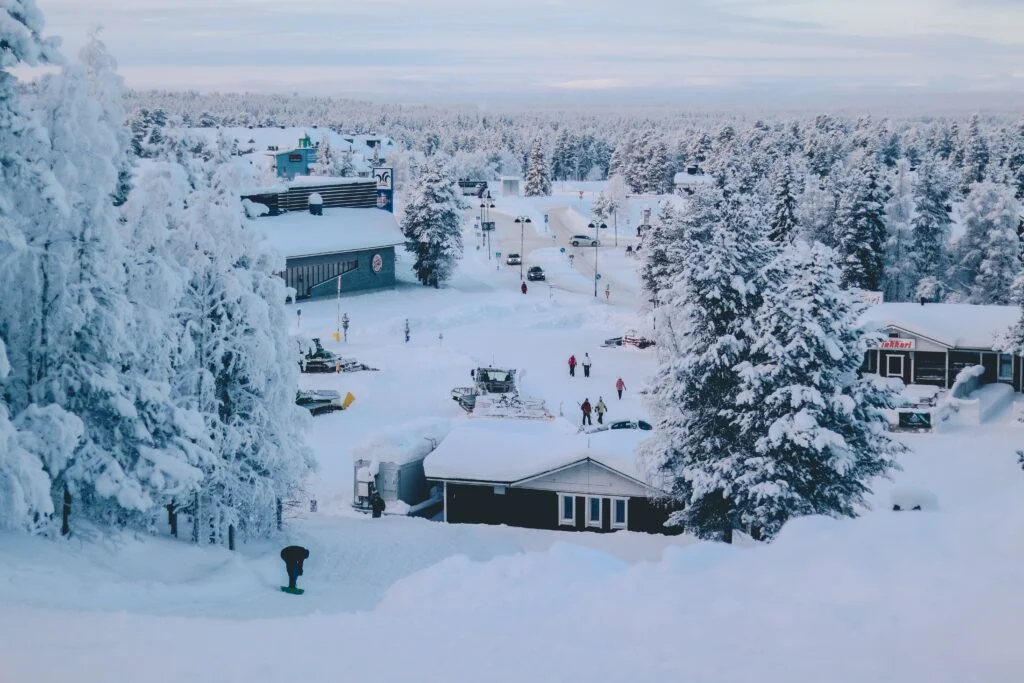
Glass Igloo
Whether you choose the activity hub of Rovaniemi or the remote charm of Levi or Saariselkä, pretty much everywhere in Finnish Lapland offers the chance to stay in cozy glass igloo accommodations. These unique and luxurious spaces allow you to witness the Northern Lights from the comfort and warmth of your bed through heated glass skylights or even floor to ceiling windows.
Every place we stayed also had the option to be woken up / notified when their cameras picked up any Aurora activity, meaning that it was almost impossible to miss them!
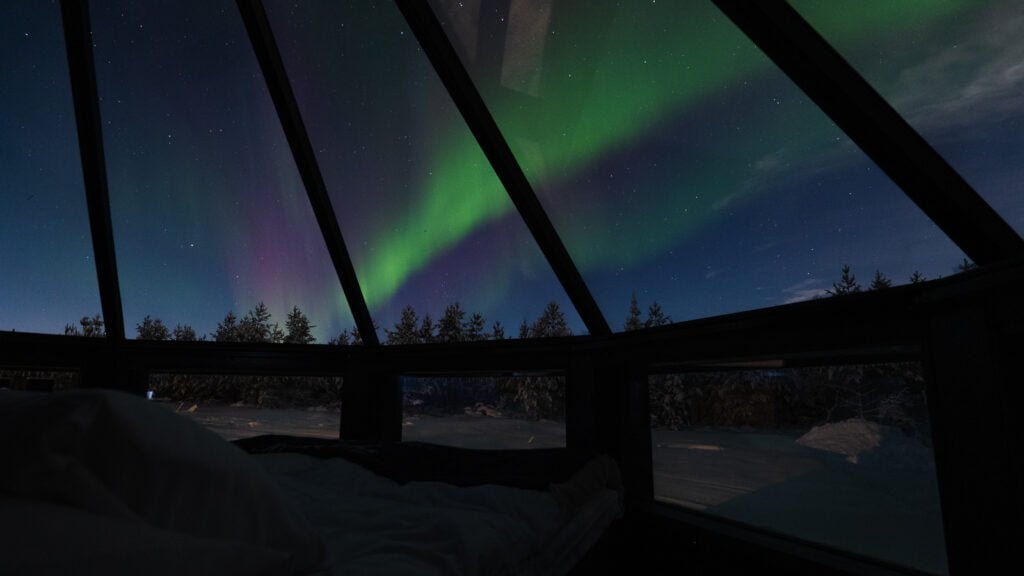
Wilderness (Best Option)
We’ve heard a lot of people describe the Northern Lights as overrated or that they could barely see them with the naked eye, and while this is sometimes the case, it doesn’t have to be! The intensity of the Aurora Borealis in different locations can vary significantly, and most of the time it’s more likely to be subtle and perhaps not as bright a you see in pictures.
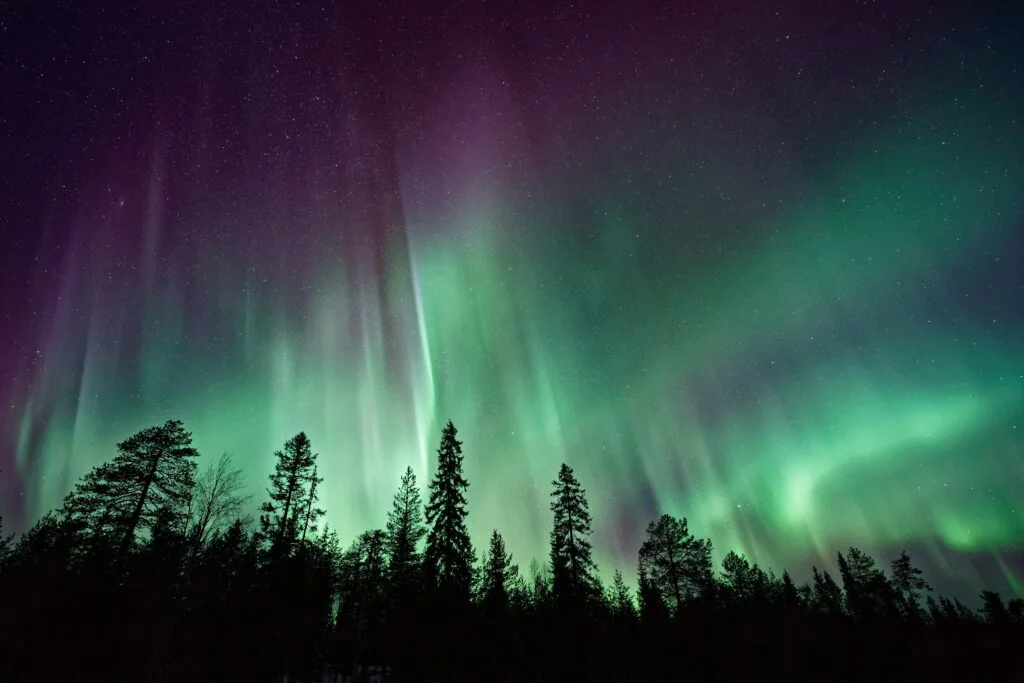
Photo by Vincent Guth
Top Tips for Watching the Northern Lights
Once you’ve decided where you’ll be staying, make sure to follow these 10 tips designed to make your encounter with the Northern Lights adventure unforgettable!
1. Avoiding Light Pollution
Probably the most important piece of advice we can give is to seek out spots as free from light pollution as possible – those remote, elevated areas that offer a clear view of the horizon away from towns and cities. Try to research local viewpoints and vantage points before your trip and look for accommodations that offer unobstructed views, such as lodges or tours that specialize in Northern Lights watching.
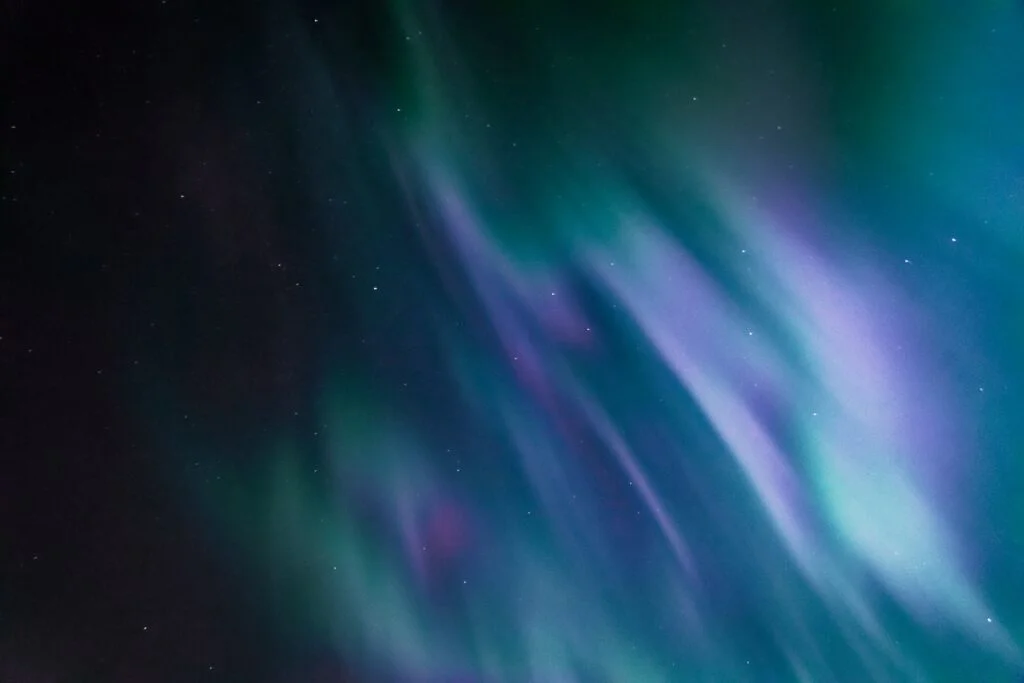
It’s also worth considering the moon phase throughout your trip as a full moon will mean more light pollution and the Northern Lights won’t appear so bright. However, we have still seen them with a full moon and with light pollution from the city, so you will still have a good chance wherever you are.
2. Monitor Aurora Forecasts Closely
Staying up to date with Aurora forecasts and updates on solar activity and geomagnetic storms are is the best way to predict the when the Northern Lights are most likely to show. We would recommend downloading an alerts app such as Northern Lights Alert so you will receive a notification on your phone when the Northern Lights are visible in your area. Many resorts in Lapland have cameras set up to track the Aurora activity and you’ll be provided with updates on the forecast throughout your stay.
3. How to Dress for the Arctic
If you’re heading out to hunt for Northern Lights there’s a good change that you’ll be hanging around outside for some time, and in temperatures as low as -30 degrees Celcius, your clothing could make or break your experience.
In our experience, the best way to deal with the Arctic cold is by layering – begin with a moisture-wicking thermal base layer, followed by an insulating mid-layer like a fleece and / or a down vest to trap precious body heat. Finally, the outer layer should be both waterproof and windproof, providing a barrier against the elements.
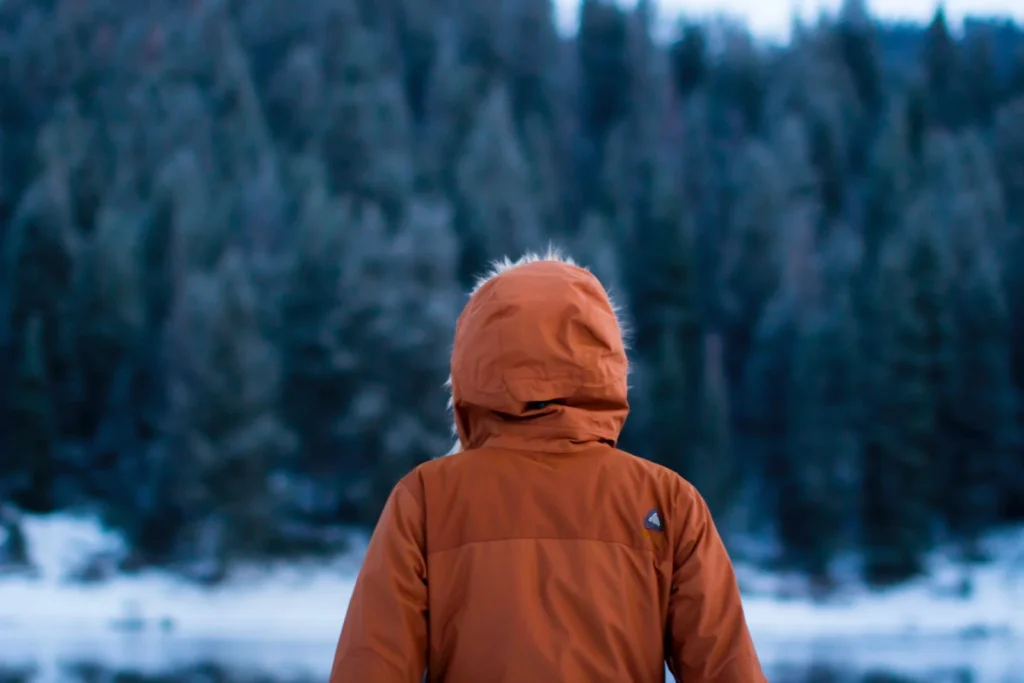
Your extremities are the hardest to keep warm so be sure to invest in quality waterproof insulated boots, thick gloves or mittens and a thermal beanie for ultimate warmth. Rechargable hand warmers are another cheap and very effective way to keep you going for at least a few hours at a time.
If your taking a guided tour, you should definitely ask what they provide before you go shopping, because often they will lend you the necessities such as boots, mittens and super-thick jackets.
4. Be Patient & Watch Carefully
Equip yourself with a comfortable seating arrangement, whether it’s a camping chair, a snug blanket or even a well-positioned reclined car seat. It will probably take your eyes a while to adjust before you’re able to see anything properly, so be patient and allow them to adjust to the darkness over approximately 20-30 minutes.
Assuming the sky is clear, sometimes they will be there and you just won’t notice straight away, it’s always worth hanging around just in case. Try bringing along a stargazing guidebook or a stargazing app to help you identify star constellations and planets while you wait.
5. Pack Snacks & Warm Beverages
If you’re going to be heading out at night (you definitely should be) sustaining your energy is a must. Pack an assortment of energy-rich snacks like trail mix or granola bars and consider filling a flask with something warm like tea, soup or maybe even a Scandinavian mulled wine, glögi.
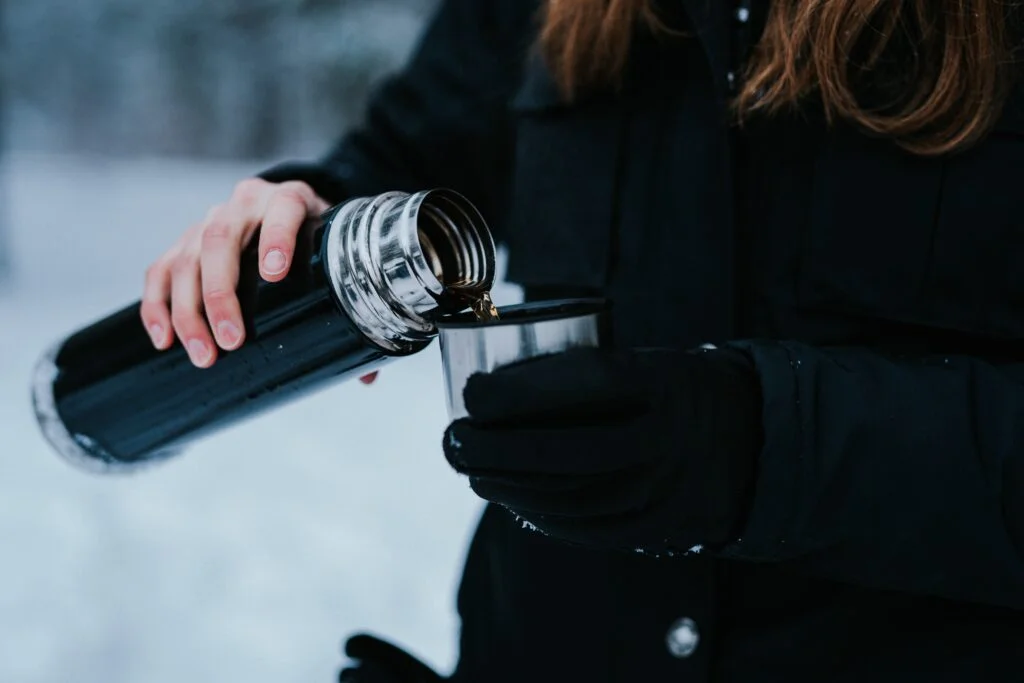
QUICK TIP
Pre-warm your flask by filling it with hot water before pouring in your chosen beverage. This helps maintain the temperature of your drink for a longer duration.
6. Minimise Light Exposure
Preserving your night vision is an art form in itself and white light, such as the light from your phone, will be your worst enemy. Make sure that you turn off any unnecessary light sources, such as phones, headlights or interior car lights, and consider opting for red-light sources instead. Red lights have minimal impact on your night vision and your ability to watch the night sky – luckily, many torches and headlamps come with red light modes.
If you’re a photography enthusiast, you’ll find the red-light solution equally valuable. When setting up your camera to capture the Northern Lights’, using a red headlamp or torch ensures that your eyes remain adjusted to the dark sky while you fine-tune your camera settings.
7. Capturing The Best Photos
Capturing stunning photos of the night sky can be a challenge if you don’t know the secrets, so here’s a few things you need to know. Ideally you’ll want to equip yourself with a camera that allows manual settings, such as DSLR or mirrorless camera or even a mobile app that lets you change your phone’s camera settings.
A wide-angle lens, as wide as possible, with a low f-stop, such as f/2.8 or lower is the optimal lens combination for night sky and Northern Lights photography.
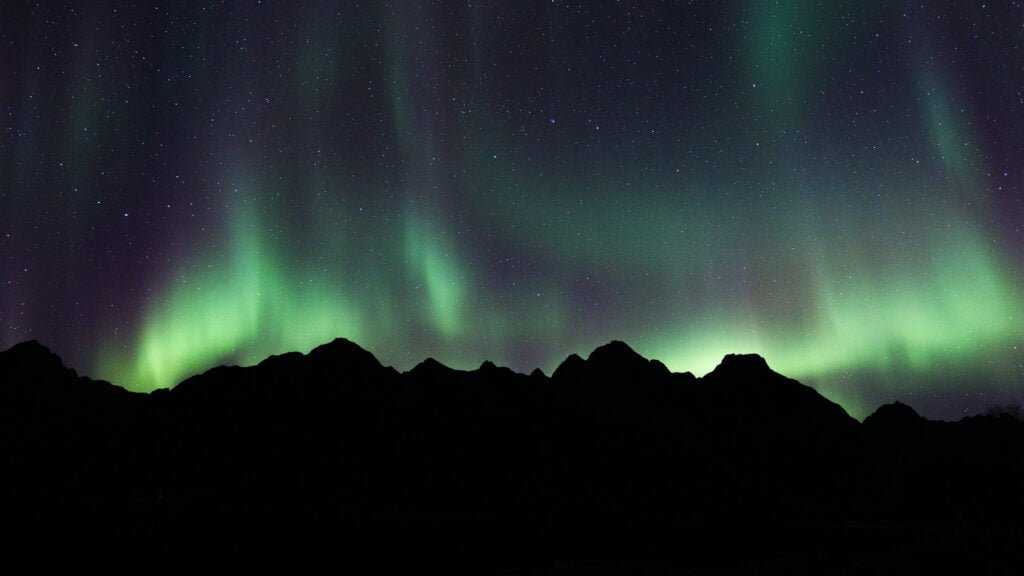
To be able to capture enough light, your camera’s shutter will need to stay open for longer than usual, so it’s essential to secure your camera on a sturdy tripod to eliminate any camera shake during these long exposures. Experiment with shutter speeds ranging from 5 to 20 seconds depending on how fast or slow, bright or faint the lights appear to be.
EXAMPLE
A shutter speed or exposure time of 5 seconds will result in less motion blur and a sharper look to the image but may result in your photo being too dark if the Aurora isn’t very intense. On the other hand, a shutter speed of 20 seconds would result in a brighter image, but if the lights were moving quickly the motion would be more heavily blurred. It’s all about finding the right balance.
8. Consider Booking a Guided Tour for Expert Insight
For those seeking the best Northern Lights experience possible, you should definitely consider booking a guided tour out into the Arctic wilderness. Local experts will have an excellent understanding of the best viewing spots, conditions and how to find them. This will usually include transportation, warm beverages, expert insights and photography, to ensure that you have an unforgettable experience.
As we mentioned earlier, not all Northern Lights shows are equal but a Aurora hunting tour is the best way to maximise your chances of getting a good one!
9. Look North
This might seem obvious but it’s easy to forget – remember to look towards the north. The Aurora Borealis typically makes its appearance in the northern part of the sky, so keeping your eyes on the northern horizon will generally increase your chances of catching them.
Book your adventure





